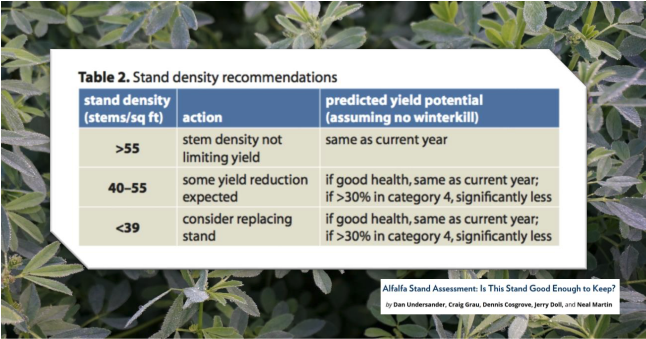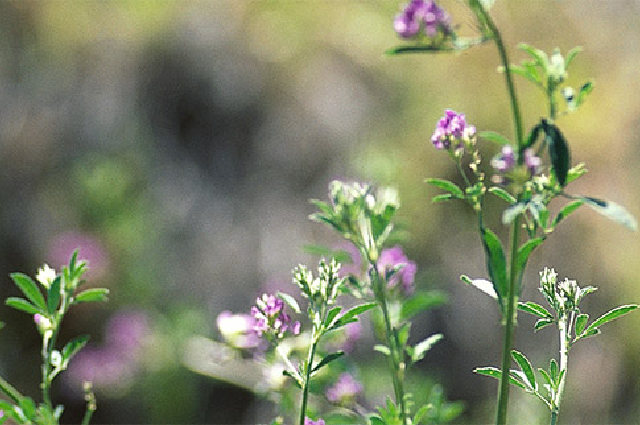
The age old question coming out of every winter is “when should I check my alfalfa and what will my stand look like this spring?” The answer to this question may be easier than you think. The best opportunity to have a surviving stand starts before any seed hits the ground. Soil tests when planning to seed alfalfa are crucial. According to the Alfalfa Management Guide, “most soil testing programs make recommendations for pH and lime, phosphorus, potassium, and several secondary nutrients and micronutrients”. Optimum pH levels should be between 6.5-7.0 to allow for the best nutrient availability. Soil should be fertilized based on overall yield goals. The ground should be prepared in a way allowing for the best seed to soil contact. Many times growers will use equipment like a brillion seeder, cultipacker, or roller to ensure proper packing of the soil. Once the stand is established, it should be evaluated in the early stages of growth (seeding year and first production year) by the number of plants/ft2. As the stand progresses in age, begin evaluating plants by counting the amount of stems/ft2. The graph above shows thresholds of 55 stems and greater as a way of maximizing yield potential. It is crucial to give plants an adequate amount of time to break dormancy in the spring to begin evaluations of winter injury. The leading factors contributing to plant mortality are periods of extremely cold temperatures with no insulation (typically below 12oF), rain/ice events, and freeze/thaw events, typically happening in early spring.

